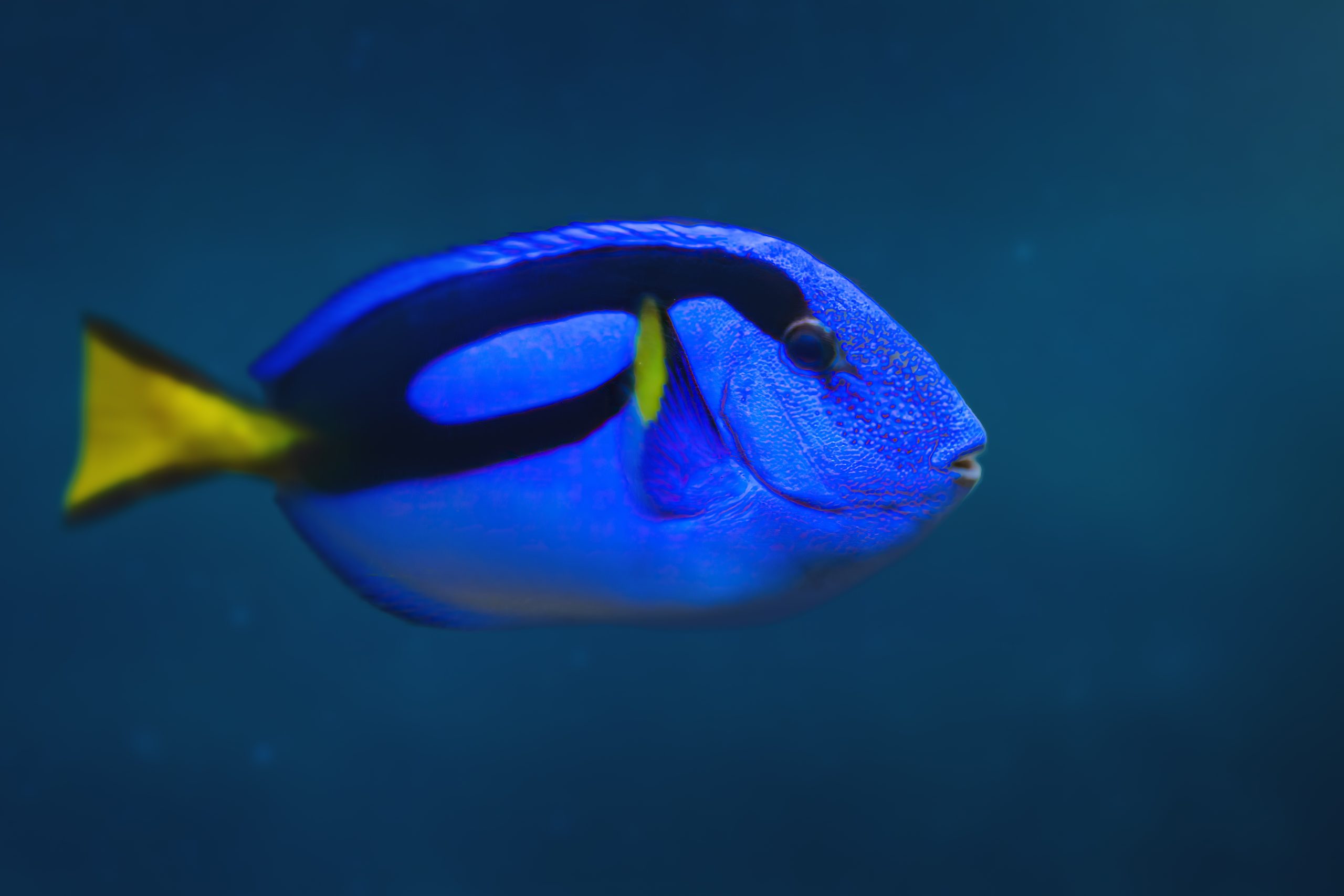
Glossary:
The Blue Hippo tang, or Paracanthus hepatus, is a highly recognizable and popular fish because of the character of Dory in the animated films Finding Nemo and Finding Dory. While part of the appeal of this fish might come from having your own Dory, potentially coupled with a clownfish resembling Nemo or his father, there’s a lot to consider regarding this fish’s care.
The following Blue Hippo tang care guide will help you decide if this fish is right for your aquarium.
Yes, the Blue Hippo tang is a reef-safe fish that will get along well with most calms, corals, and other inverts in your tank. They’re actually herbivorous, which will go a long way in helping your reef tank thrive as they feed on algae and other vegetarian foods.
The Blue Hippo tang must have plenty of algae to flourish in your saltwater tank. You can also supplement these algae with protein in the form of plankton. You’ll also want to feed this fish at least twice per day, so ensure you don’t forget to provide enough food for your Blue Hippo tang.
The Blue Hippo tang may appeal to many aquarists because of its coloration and its popularity due to the character of Dory in Finding Nemo and Finding Dory. However, it’s not the best beginner fish when it comes down to it. The water conditions of this fish’s tank must be near-perfect for it to thrive. Any inconsistencies and issues with its environment could cause the fish’s condition to deteriorate.
Blue Hippo tangs, like other types of tangs, are vulnerable to parasites like ich. To prevent this potential issue, properly quarantine your fish before introducing them to your tank, which will help avoid contamination.
You should feed your Blue Hippo tang around two to three times per day, and give it ample live rock for grazing purposes. To allow for grazing, you can use everything from seaweed and algae flakes to spirulina.
The price of the Blue Hippo tang will vary depending on the size, rarity, and other considerations. However, you can find this fish on the market at prices ranging from around $80 to $150 or more. Take a look around online to find the right fish at the right price.
The following are a few facts to know about the Blue Hippo tang:
If you want to keep more than one Blue Hippo tang in your tank, you may want to stick to male-female pairs unless you have plenty of space or want to keep them in schools. Adult Blue Hippos can work well in shoals if you keep more than two in the same tank. However, they can become territorial much like other tangs.
The best tank mates for the Blue Hippo tang include other peaceful fish that won’t bother them, which could include groupers, gobies, and clownfish.
You can find Blue Hippo tangs for sale at the following online shops:
The Blue Hippo tang is a potentially great addition to a saltwater tank with the right care. Based on your capabilities when it comes to care, you may find this fish to be worth the effort.